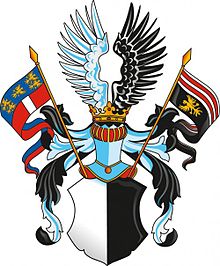You can help expand this article with text translated from the corresponding article in German. (December 2015)Click [show] for important translation instructions.
|

The House of Abensberg und Traun (now usually written Abensperg-Traun) is the name of an ancient Austrian noble family, originally from the Upper Austrian Traungau. It is considered one of the oldest extant aristocratic families in Central Europe.






